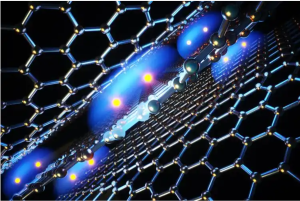Challenges in Industrial-Scale Production of Single-Walled Carbon Nanotubes (SWCNTs) and Strategies for Breakthroughs
Single-walled carbon nanotubes (SWCNTs) are widely regarded as one of the most promising nanomaterials, offering exceptional properties such as high electrical conductivity, remarkable thermal conductivity, and unparalleled mechanical strength. Despite their vast potential, industrial-scale production of SWCNTs faces significant hurdles. This article explores the current bottlenecks in SWCNT mass production—cost, scalability, and purity—and proposes strategies to overcome these challenges through advancements in catalysts, process optimization, and innovative technologies.

1. Major Bottlenecks in Industrial-Scale SWCNT Production
1.1. High Production Costs
Producing SWCNTs is an expensive process due to the combination of high-temperature requirements, specialized equipment, and costly raw materials. These factors significantly raise the cost per gram, making SWCNTs less viable for widespread commercial applications.
1.2. Challenges in Purity and Chirality Control
- Purity Issues:
Industrial processes often produce mixtures of SWCNTs, multi-walled carbon nanotubes (MWCNTs), amorphous carbon, and metallic impurities. Separating SWCNTs from these by-products adds complexity and cost. - Chirality Control:
SWCNTs exhibit a range of electrical properties based on their chirality (the arrangement of atoms in their structure). Controlling chirality during synthesis is challenging, leading to mixed products with inconsistent properties. This hinders their application in electronics, where precise electrical behavior is critical.
1.3. Scalability Limitations
Current production methods struggle to scale effectively due to technical and economic constraints:
- Chemical Vapor Deposition (CVD): While scalable, CVD processes require precise conditions to maintain quality, which becomes increasingly difficult at larger scales.
- Arc Discharge and Laser Ablation: These methods are energy-intensive and produce low yields, making them impractical for mass production.
1.4. Lack of Homogeneity
Inconsistent quality across batches is a persistent problem in SWCNT production. Variations in diameter, length, and defect density affect the material’s performance and reliability in industrial applications.
1.5. Environmental and Energy Concerns
The high energy consumption and generation of by-products in traditional SWCNT synthesis methods pose environmental challenges. Sustainable production methods are essential for long-term scalability.
2. Breakthrough Strategies for Industrial-Scale SWCNT Production
2.1. Catalyst Optimization
Catalysts play a pivotal role in SWCNT synthesis, directly influencing yield, purity, and chirality.
- Development of Efficient Catalysts:
Transition metal catalysts (e.g., Fe, Ni, Co) are widely used, but they often result in metallic impurities. Advances in bimetallic or alloy catalysts, such as Fe-Co or Ni-MgO, have shown potential to enhance yield and selectivity. - Single-Atom Catalysts:
Recent research into single-atom catalysts offers promise for precise control of SWCNT growth, improving chirality control and reducing defects. - Reusable and Green Catalysts:
Developing recyclable catalysts and eco-friendly precursors can lower costs and reduce the environmental impact of SWCNT production.
2.2. Process Optimization
Innovative process modifications can address scalability and consistency challenges.
- Controlled CVD Processes:
Advances in atmospheric pressure CVD (APCVD) and fluidized bed reactors enable continuous production of high-purity SWCNTs with better scalability. Incorporating real-time monitoring systems ensures consistent quality. - Low-Temperature Techniques:
Exploring low-temperature growth methods, such as plasma-enhanced CVD (PECVD), can significantly reduce energy consumption while maintaining quality. - Post-Synthesis Purification Improvements:
Optimized purification processes using surfactants, centrifugation, or chemical etching can efficiently separate SWCNTs from impurities, increasing overall yield.
2.3. Breakthroughs in Chirality Control
Precise chirality control is critical for high-value applications, especially in electronics.
- Template-Guided Growth:
Using substrates with predefined patterns can guide the growth of SWCNTs with specific chiralities. For example, single-crystal surfaces have been explored to control the orientation of nanotube growth. - Selective Etching Techniques:
Advanced chemical or thermal etching methods can selectively remove undesired chiralities, enriching the desired type. - DNA-Assisted Separation:
Functionalizing SWCNTs with DNA or polymers enables post-synthesis separation of nanotubes based on chirality, though scaling this method remains a challenge.
2.4. Scale-Up Innovations
Bridging the gap between lab-scale and industrial-scale production requires new technologies.
- High-Throughput Systems:
Transitioning from batch to continuous processes using roll-to-roll CVD systems or fluidized bed reactors can improve efficiency and scalability. - Modular Production Units:
Deploying small, modular reactors allows for distributed production, reducing the risk and cost associated with scaling a single large facility.
2.5. Cost Reduction Strategies
Lowering production costs is essential for broader adoption of SWCNTs.
- Renewable Feedstocks:
Utilizing biomass-derived hydrocarbons or waste gases (e.g., methane, ethylene) as carbon sources can reduce reliance on expensive feedstocks. - Energy Recovery Systems:
Incorporating heat recovery systems into production setups can lower energy consumption and operating costs. - Automation and AI Integration:
Automating SWCNT synthesis with AI-driven control systems can optimize reaction parameters, improving yield and reducing waste.
3. Emerging Research and Future Directions
3.1. Large-Scale Reactors
Scaling SWCNT production requires reactors capable of handling high volumes without compromising quality. Innovations in reactor design, such as multi-zone CVD systems, are a promising direction.
3.2. Hybrid Methods
Combining multiple synthesis techniques (e.g., integrating PECVD with traditional CVD) can harness the advantages of each, achieving better scalability and quality.
3.3. Sustainable Production Focus
Increasing emphasis on green chemistry and life cycle assessment (LCA) is driving the development of environmentally friendly production techniques. Companies are investing in carbon-neutral processes and adopting circular economy principles.
4. Conclusion
The industrial-scale production of SWCNTs remains a complex challenge, hindered by high costs, scalability issues, and difficulties in achieving purity and chirality control. However, advancements in catalyst design, process optimization, and innovative scaling techniques offer a pathway to overcoming these bottlenecks.
As the demand for SWCNTs grows across industries like energy, electronics, and aerospace, breakthroughs in production technologies will be crucial. A collaborative effort between academia, industry, and policymakers can accelerate the transition to sustainable, high-volume SWCNT production, unlocking their full potential in transforming modern technologies.

